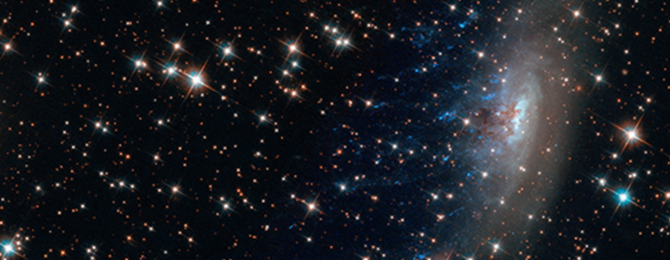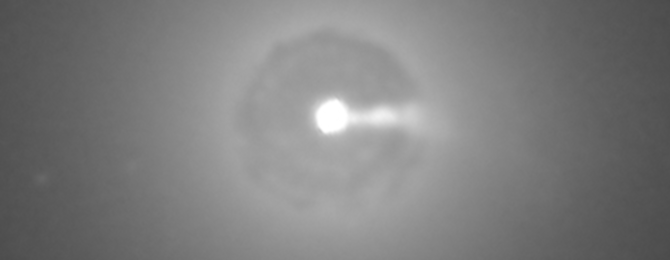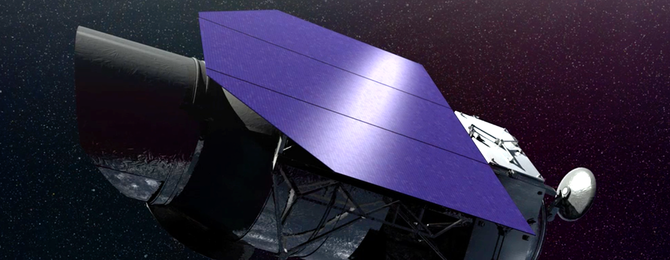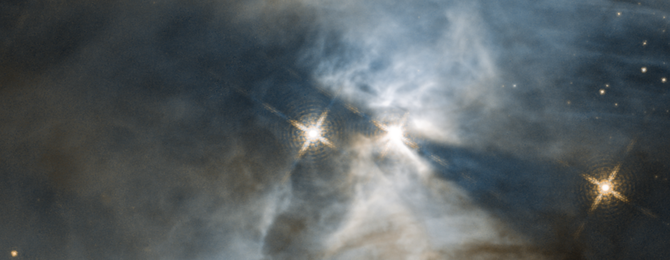Hubble Views the Star that Changed the Universe
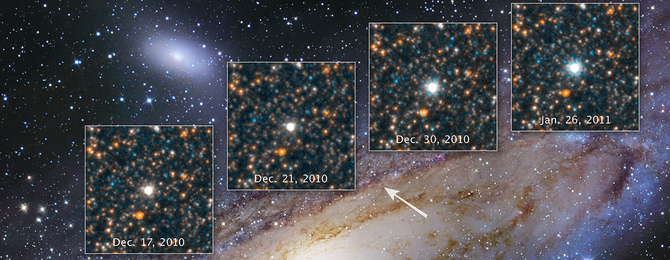
Though the universe is filled with billions upon billions of stars, NASA's Hubble Space Telescope has been trained on a single variable star that in 1923 altered the course of modern astronomy. And, at least one famous astronomer of the time lamented that the discovery had shattered his world view. The star goes by the inauspicious name of Hubble variable number one, or V1, and resides two million light-years away in the outer regions of the neighboring Andromeda galaxy, or M31. V1 is a special class of pulsating star called a Cepheid variable that can be used to make reliable measurements of large cosmic distances. The star helped Edwin Hubble show that Andromeda lies beyond our galaxy. Prior to the discovery of V1 many astronomers, including Harlow Shapley, thought spiral nebulae, such as Andromeda, were part of our Milky Way galaxy. Others weren't so sure. In fact, Shapley and Heber Curtis held a public debate in 1920 over the nature of these nebulae. But it took Edwin Hubble's discovery just a few years later to settle the debate. Hubble sent a letter, along with a light curve of V1, to Shapley telling him of his discovery. After reading the note, Shapley reportedly told a colleague, "here is the letter that destroyed my universe." The universe became a much bigger place after Edwin Hubble's discovery.
In commemoration of this landmark observation, astronomers with the Space Telescope Science Institute's Hubble Heritage Project partnered with the American Association of Variable Star Observers (AAVSO) to study the star. AAVSO observers followed V1 for six months, producing a plot, or light curve, of the rhythmic rise and fall of the star's light. Based on this data, the Hubble Heritage team scheduled Hubble telescope time to capture Wide Field Camera 3 images of the star at its dimmest and brightest light levels. The observations are being presented on May 23 at the meeting of the American Astronomical Society in Boston, Mass. Copies of the photograph Edwin Hubble made in 1923 flew onboard space shuttle Discovery in 1990 on the mission that deployed Hubble. Two of the remaining five copies were part of space shuttle Atlantis's cargo in 2009 for NASA's fifth servicing mission to Hubble. Edwin Hubble's observations of V1 became the critical first step in uncovering a larger, grander universe. He went on to measure the distances to many galaxies beyond the Milky Way by finding Cepheid variables within them. The velocities of those galaxies, in turn, allowed him to determine that the universe is expanding. The space telescope that bears his namesake continues using Cepheids to refine the expansion rate of the universe and probe galaxies far beyond Edwin Hubble's reach.
(More at HubbleSite.com)
